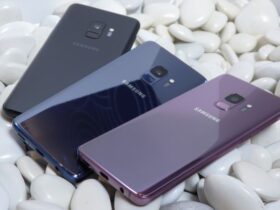Is Ethereal Beauty A Myth? Read More To Know About.
The expectation for women to look beautiful is as old as time, and the pressure is not more prevalent now than it has been throughout history. There have been terms dedicated mainly to describing women’s beauty, and they have been called everything right from pretty, attractive, and alluring to heavenly. Ethereal is one term that describes women’s beauty as something that looks eternal or otherworldly. Of all the words used to describe women, this is perhaps one of the most confusing and wrong. Ethereal beauty is nothing but a myth, no matter which way you see it.

Source:
The different notions of beauty all over the world
What looks ethereal to you might not seem so stunning to someone else, as the places we come from are significant determinants of our beauty standards and outlooks. Please think of the Roman and Greece women of the Caesarian era strutting gracefully in their elegant robes, and ethereal is undoubtedly the first word that comes to your mind. Move east to the Indian subcontinent, and the beauty standards again see a sea change. In that same period, the women were covered in six yards of elegant Saree and ornate jewelry and looked nothing short of Goddesses reincarnated. Take a trip to the British societies of the bygone era, and you will find women looking pristine in their elaborate gowns and extravagant hairdos.
Even in the modern era, western women with slender waists are considered gorgeous, whereas, in France, the emphasis is more on women who look au natural. Closer home in the subcontinent, the stress has always been over curvy women with a thick and flowing mane. Thus, the notions of beauty also change over time, and what was considered heavenly beauty at one point in time does not indeed hold for the present era.
To sum it all up, it is evident that to define the ethereal by one notion is quite an impossibility, given how the perceptions of beauty change over the continents and even every few kilometers. Our ideas of universal beauty are shaped by the region and the generation that we come from.
The scientific factors behind ethereal beauty
When discussing the myth behind ethereal beauty, it is unfair to negate its scientific factors. One widely accepted scientific element of beauty is equating it with facial symmetry, having evenly balanced features on both sides of the face. It has been advocated by several researchers that stress and diseases developed in childhood subtly influence the structure of the body, making one side appear different from the other. A slightly crooked face is generally not associated with delicate beauty.
Look at all the portraits of women that look ethereal to you, and you will find that the symmetry factor is common among most or all of them. The most prominent example of this factor lies in the portrait of the Mona Lisa by Da Vinci. The women’s facial features look delicate and perfectly symmetrical, making the painting earn the tag of the perfect example of enigmatic unearthly beauty.
However, in real life, people do not always look for symmetry in their faces. Most of the scientific experiments that advocated balance worked with a small number of subjects to rate out the different faces. Other studies suggest that asymmetry can be equated to complexity and character, making a woman look more compelling and exciting to the eyes.
Studies also suggest that we equate ethereality with the softness of features representing femininity to the human mind. The bone structure that gives a woman a defined jawline and high cheekbones, though considered stunning, is not equated with ethereality for some strange reason.
The concepts of timeless and ethereal beauty are more often than not a product of our immediate circumstances. It can be the effect of conformity when you see a group of people attracted to a person, and you are more likely to consider them beautiful. Thus, the tastes for a particular kind of beauty spread within a population, and it ends up shaping our norms regarding timeless beauty.
The unexplainable myth of ethereal beauty
Ethereal is a very vague term describing and defining a woman’s beauty. Any word that comes without a set explanation and has such changing ideas from one individual, region, or time to another is bound to be nothing more than a myth.
The modern woman can be powerful, aggressive, lively, confident, and more, and she is beautiful in all of these aspects. A woman who has sharp facial features looks as unique as a woman with softness in her parts. Limiting the definition of beauty to heavenly or ethereal seems unfair to anyone.
However, it seems like ethereal is a term people will continue to associate with beauty even though when it comes to defining it, they will not be able to quite put the finger on what constitutes the ideal ‘ethereal beauty.’ It is time to burst this myth and embrace more worldly and realistic ideas and beauty standards.
















